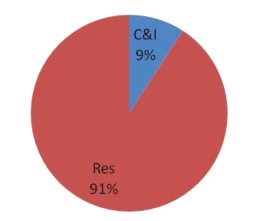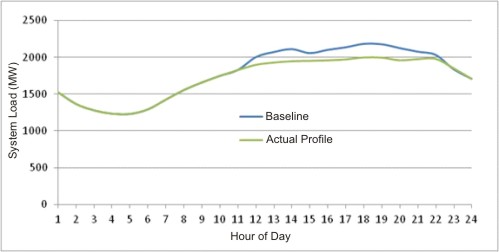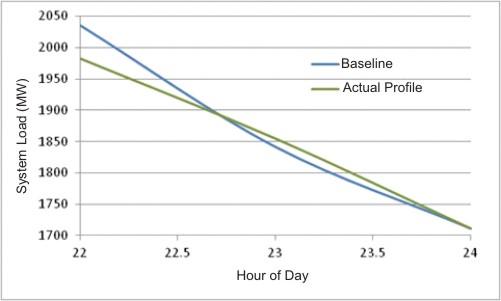
Yes, Energy Savings
Many people may think direct load control (DLC)[1], or demand response, is at best an energy-neutral, demand-savings-only endeavor. As Lee Corso would say, “Not so fast my friend.” It turns out that DLC often produces significant energy savings. Although the demand savings directly impact system capacity, fuel use, efficiency, and many other important things, the energy impacts of DLC should not be ignored. Recently, Michaels completed a study to estimate the impact DLC has on energy use. This study involved both utility-wide analysis and simulation of individual residences and small commercial facilities to determine net energy impacts. Although the study originally focused on quantifying rebound, or snapback, which is the increase in demand and energy use following a DLC event, the surprising finding was that even with snapback, energy savings exist with each DLC event.



Looking at Utility Data
Take a look at this graph of a large utility’s system load profile for a summer peak day. The “Baseline” represents the system load without demand response. The “Actual Profile” represents the observed load with a demand response event. The snapback after the event is also on the graph but it’s so small it is nearly impossible to see.
Check out the second chart for a zoomed in look.
That’s better. Even at this level, the snapback (green line above blue) is still very small. Energy savings occur whenever the green line is below the blue line and snapback reduces savings. Looking at the graphs, the blue line spends more time above the green than vice-versa, meaning the net result of this demand event is energy savings. This same trend appeared for both of the utilities in this study (see the first table).
Demand Response Begins at Home
Digging deeper into the data, the majority of the snapback comes from residential customers (at least for this one large utility).
Why is this? There are two likely culprits: commercial and industrial (C&I) customers are often closed by the time the event ends (usually 7-9 pm), and they sometimes have backup generation so their operations are not interrupted during an event.
What about specific DLC technologies? How well do they work? Michaels performed energy modeling on a typical home, simulating five methods of DLC. The results in the second table show that all of these save energy in addition to demand, except for the electric thermal storage for heating.
What is the Takeaway Here?
Demand response saves energy too! There is significant untapped potential for demand response technologies, especially in the residential sector. Snapback, while measurable, is still dwarfed by the energy savings during the demand response event. Although these events may only occur a few times each year, their load reduction value to utilities is great, with the unexpected energy savings as a nice bonus.
[1] DLC includes cycling air conditioners on and off, interrupting service, curtailing water heaters and other load reduction techniques.



